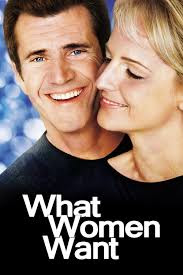Cultural Commodification & Film Costume
 |
| Ajmera Mohan Singh: Assistant Professor Centre for Art Direction & Set Design Skills & Centre for Textiles & Fashion Skills. |
Arjun Appadurai (1988) in his edited book, The social life of things: Commodities in cultural perspective. In his introductory essay in the first chapter "Commodities and the Politics of Value", starts by defining commodities provisionally as objects of economic value. He says that commodities would be of interest to anyone studying cultures such as the cultural anthropologist who is interested in the “material culture” of societies . An essay in the second chapter by Igor Kopytoff, explains "For the economist, commodities simply are. That is, certain things and rights to things are produced, exist, and can be seen to circulate through the economic system as they are being exchanged for other things, usually in exchange for money." He expands on the argument that “from cultural perspective, the production of commodities is also a cultural and cognitive process”, and further he adds to that “commodity must be not only produced materially as a thing, but also culturally marked as being a certain kind of thing.” He assumes commodities to be universal cultural phenomenon, their existence accompanied by transactions that involve the exchange of things
The powerful visual medium is film which provides us with primary information on the usage of cultural codes for creating visual pleasure. Through the construction of denotative meaning the films helps to engage the audience, particularly by their aesthetic visual appeal. Connotative meaning creation is a byproduct of denotation through which it provides psychological satisfaction.
Film costume is one of the important elements that introduces the characters to the audience and affects them. The categorization in terms of position and social hierarchy, the very basic aspects of gender identity, age and period of the character is deciphered through their costume. According to Louis Giannetti, (2001) “costume is an unusual form of dress, which provides stylized image visually with colours, textures, material substance, and movements based on historical, cultural, and social significance”. Thus we can understand that costume can speak of the characters without any formal language; psychologically, socially and culturally, costume has its own sign and symbol system and through that, it reaches the audience. In order to match with other elements of mise-en scene, the light, texture, colour, style shape of film, costume is particularly used; it is also chosen to enhance the overall mood of the movie and the viewing experience of the audience. The importance of film costume in coordination with other mise-en-scene elements is to help audience appreciate the film’s creativity. Lighting, setting, and costume have tight, inseparable relationship with each other. All these elements project the visual effect on screen and are indispensable in the making of the whole film style. Lighting plays a key role in changing hues, mood, and creating an aesthetic field. Film costume assists in emphasizing the human figurines from its environment and depicts the characters. The following is
one of the examples is the Khal Nayak film. Title of the film indicates that Khal Nayak is supposed to be a Villain but, he is the ultimately hero of this film. In the title song, the hero's mistress performs erotic dance in a fantasy kind of world; the elements used to create the characters, costume, prop, lighting and setting are based on western style of erotic paintings. It is a good example of portraying women’s body with minimal and fashionable clothes in the song sequence as an erotic visual spectacle, where the woman’s body is tantalizingly offered for the view and consumption of the spectator. It also works oppositely in some historical or fantasy characters like in Sanjay Leela Bhansali’s film, Bajirao Masthani where the Bajirao’s characterisation is identified with the style of costumes, whereas Masthani character is very much glamorised through her costume and been created a strong visual pleasure to the audience.
*****
Assistant Professor – With a master’s degree in mass communication from the University of Hyderabad, Ajmera is in the advanced stages of finishing his Ph.D. in Film Studies and Visual Culture from The English and Foreign Languages University in Hyderabad. A career academic, Ajmera has worked with leading organizations like ICAT Design and Media College in Hyderabad, CREO Valley School of Film and Television in Bangalore and The Sagar School in Delhi.



Comments
Post a Comment